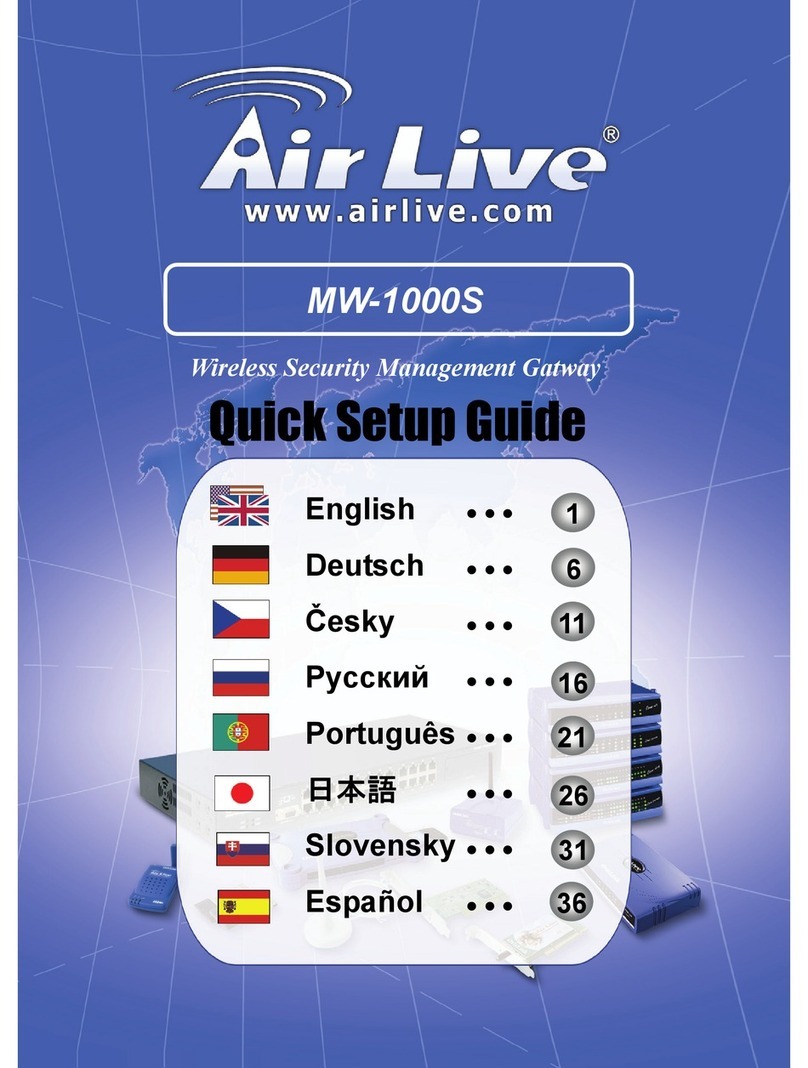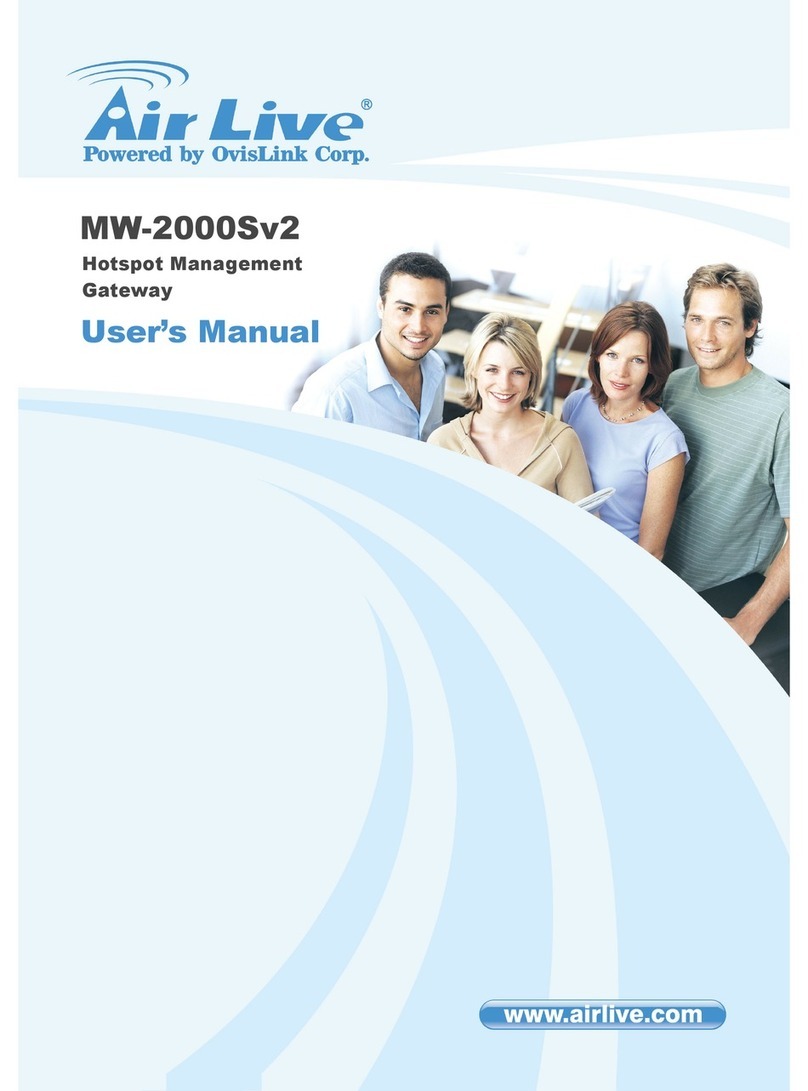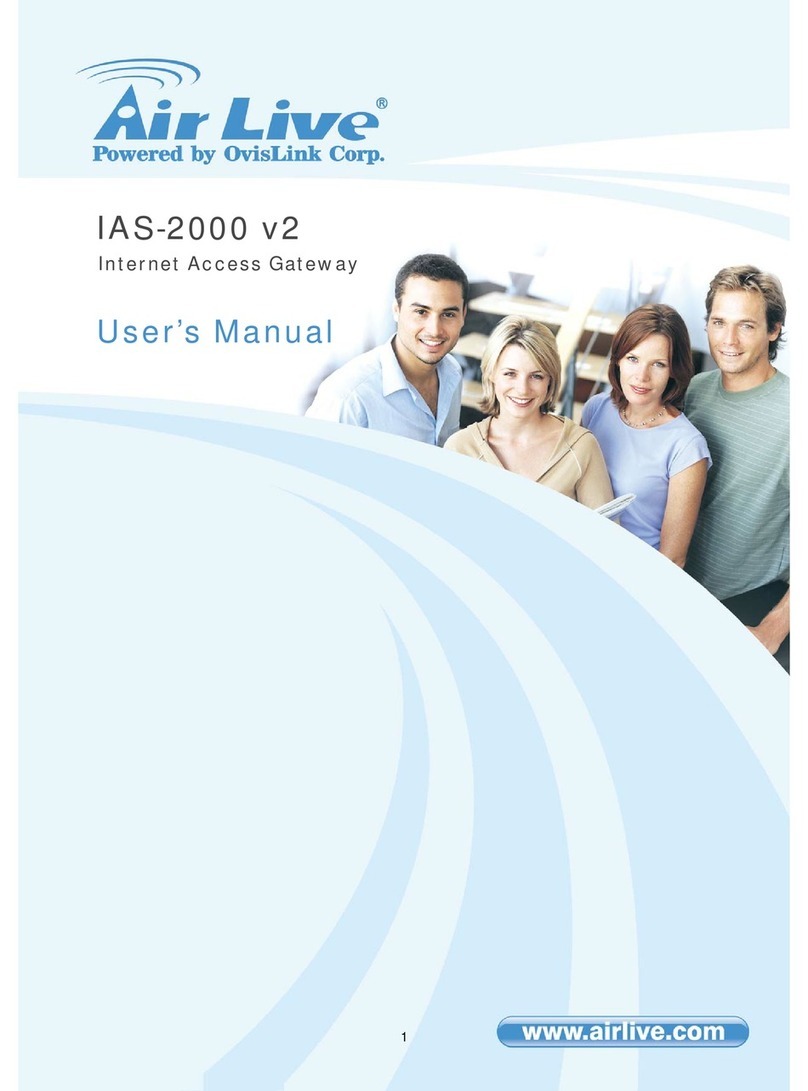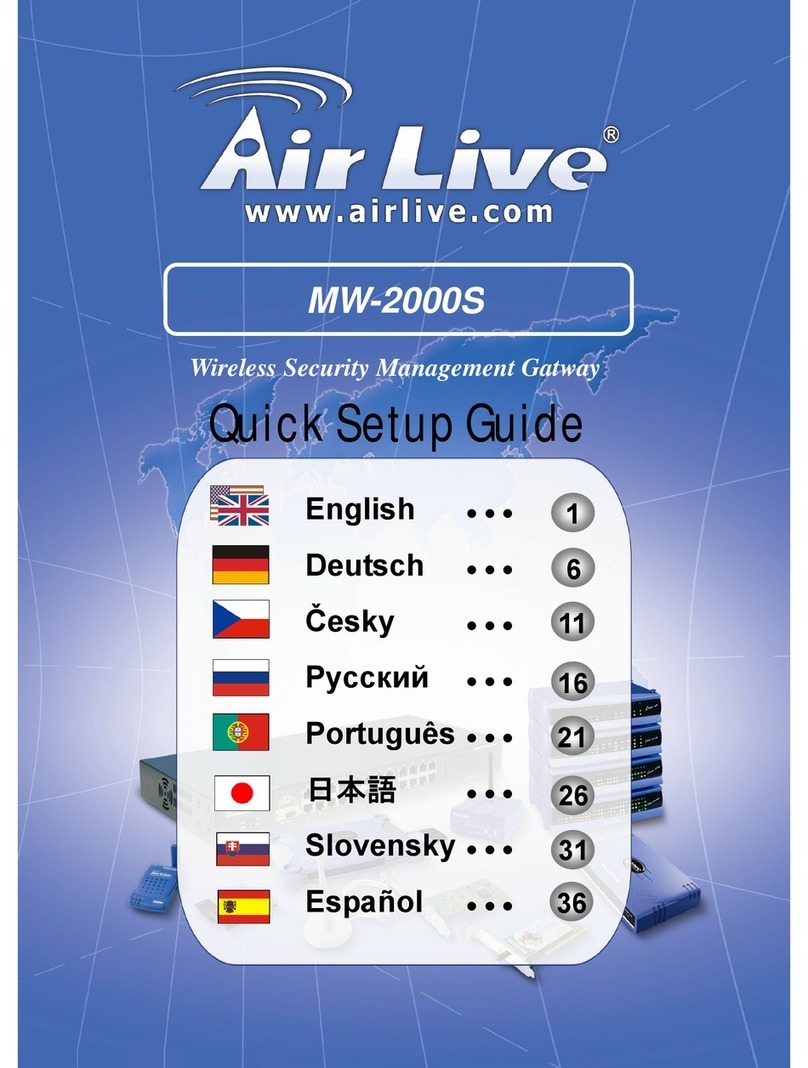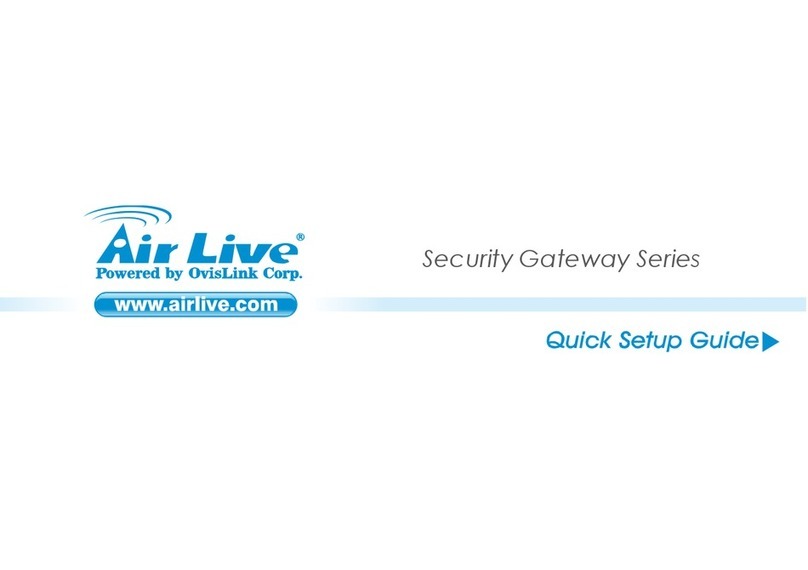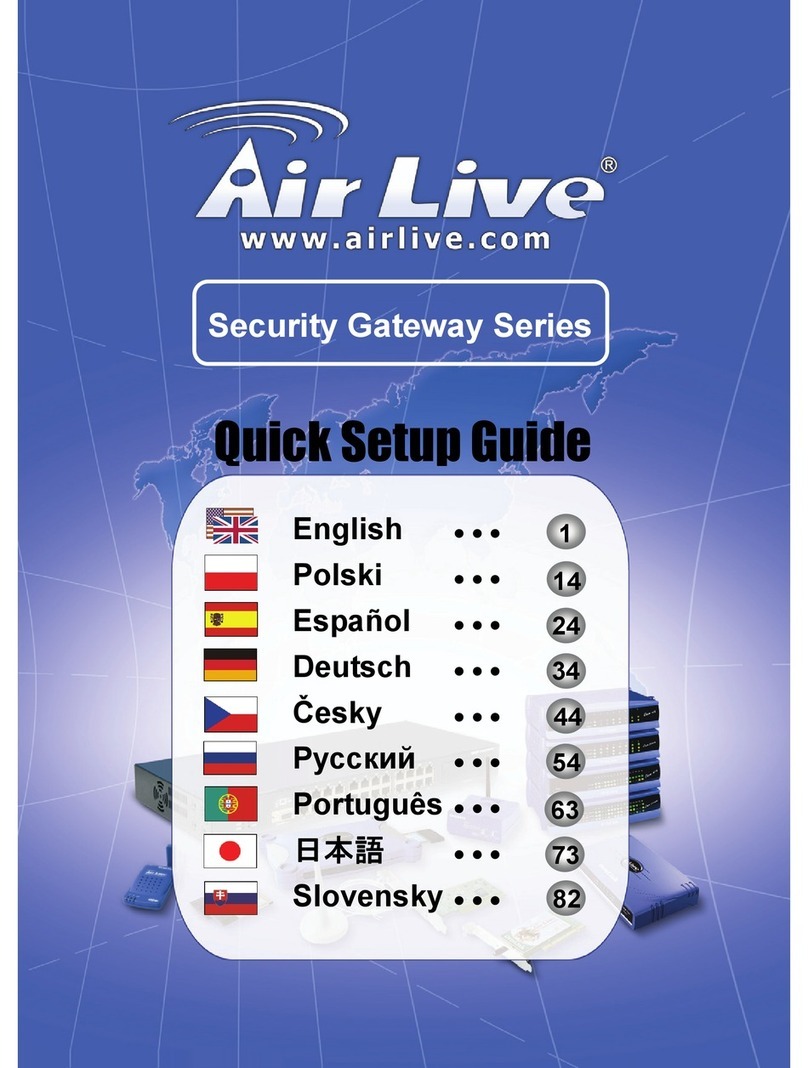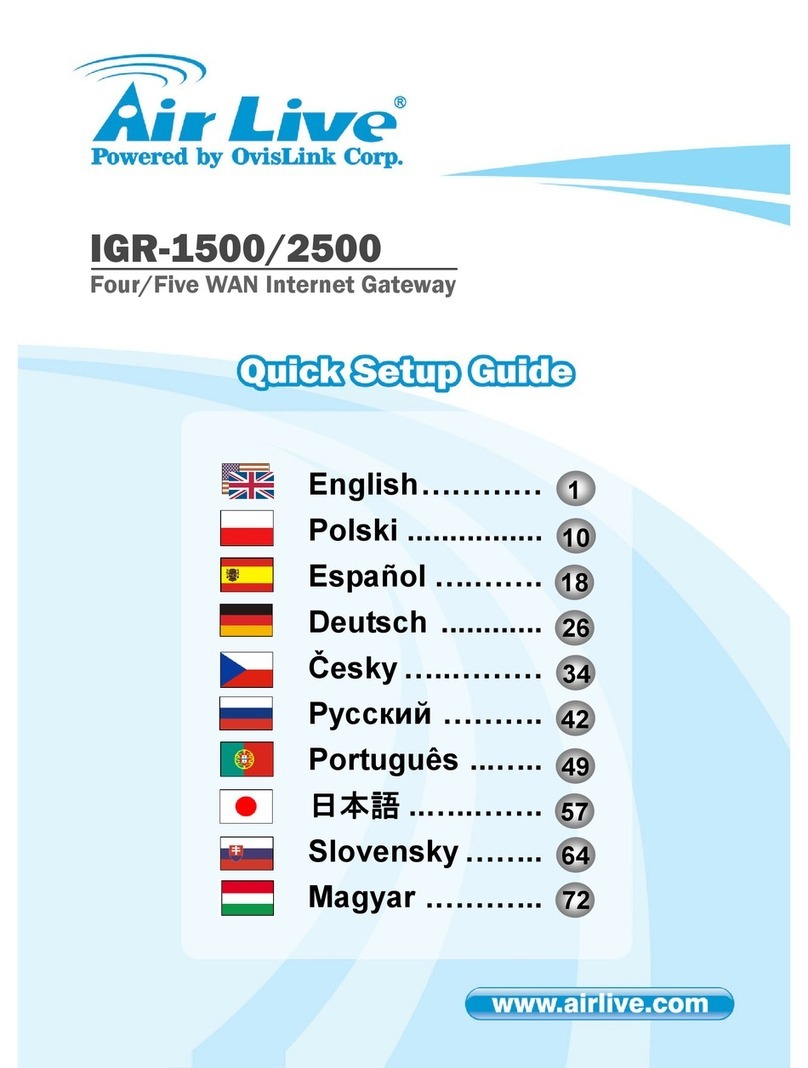Table of Contents
Air Live IAS-2000 User’s Manual V1.0.
i
Table of Contents
0HTable of Contents.........................................................................................................................................................63Hi
1HChapter 1. Before You Start................................................................................................................................64H1
2H1.1 Audience...................................................................................................................................................65H1
3H1.2 Document Signal ......................................................................................................................................66H1
4H1.3 Glossary....................................................................................................................................................67H1
5HChapter 2. Overview..........................................................................................................................................68H15
6H2.1 Introduction of IAS-2000 .......................................................................................................................69H15
7H2.2 System Concept......................................................................................................................................70H15
8HChapter 3. Hardware Installation ....................................................................................................................71H18
9H3.1 Panel Function Descriptions...................................................................................................................72H18
10H3.2 Package Contents....................................................................................................................................73H19
11H3.3 System Requirement...............................................................................................................................74H20
12H3.4 Installation Steps.....................................................................................................................................75H20
13HChapter 4. Network Configuration on PC.......................................................................................................76H22
14H4.1 Internet Connection Setup ......................................................................................................................77H22
15H4.1.1 Windows 9x/2000 .................................................................................................................................78H22
16H4.1.2. Windows XP .........................................................................................................................................79H24
17H4.2 TCP/IP Network Setup ...........................................................................................................................80H27
18H4.2.1. Check the TCP/IP Setup of Window 9x/ME.........................................................................................81H27
19H4.2.2. Check the TCP/IP Setup of Window 2000............................................................................................82H30
20H4.2.3. Check the TCP/IP Setup of Window XP...............................................................................................83H33
21HChapter 5. Web Interface Configuration .........................................................................................................84H36
22H5.1 System Configuration.............................................................................................................................85H38
23H5.1.1 Configuration Wizard............................................................................................................................86H38
24H5.1.2 System Information...............................................................................................................................87H47
25H5.1.3 WAN1 Configuration ............................................................................................................................88H48
26H5.1.4 WAN2 Configuration ............................................................................................................................89H50
27H5.1.5 LAN1 / LAN2 Configuration................................................................................................................90H51
28H5.2 Network Configuration...........................................................................................................................91H56
29H5.2.1 Network Address Translation................................................................................................................92H56
30H5.2.2 Privilege List.........................................................................................................................................93H59
31H5.2.3 Monitor IP List......................................................................................................................................94H62




